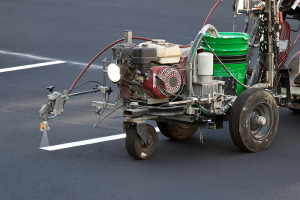Simulations show future flooding risk at coastal hospitals
According to a study published in the journal GeoHealth, climate change is expected to increase hospital flooding risk along the East Coast by 22% in the next century.
The study, “Flood Risk to Hospitals on the United States Atlantic and Gulf Coasts From Hurricanes and Sea Level Rise,” was conducted by researchers at the Harvard T.H. Chan School of Public Health. The research team created storm surge hazard maps using data from the “Sea, Lake and Overland Surges from Hurricanes” model from the National Weather Service of the National Oceanic Atmospheric Association.
The hazard maps, which take expected sea level rise into account, tested simulations for hurricane categories 1-4. Each category was tested at current sea level, 0.50-meter increased sea level rise and 0.82-meter increased sea level rise. The study analyzes hospitals within 16 miles of the Atlantic and Gulf coasts located in metropolitan statistical areas (MSAs).
Researchers found that of 78 MSAs in the study, 25 are at risk for having half or more of hospitals in their regions flood from a Category 2 hurricane.
Even those that are at a lower risk from direct floods to their facilities are still susceptible to indirect impact due to roadway flooding. The researchers assessed simulations that produced road inundation within 1 mile of a hospital’s radius and found that seven MSAs have 50% or more of their roads within a 1-mile radius of a hospital at risk of flooding from a Category 2 hurricane.
“Interruptions in care after hurricanes prevent patients from obtaining necessary medical care,” the study authors write. “Lack of access to dialysis centers, substance abuse treatment facilities, pharmacies, ambulatory care centers and reliable electricity in patients’ homes lead to higher rates of complications and exacerbations of chronic medical problems.”
As climate change intensifies, coastlines shift and sea levels rise, the researchers say it is crucial that health care organizations continue to shore up facilities with resilient features. The study cites the Southeast Louisiana Veterans Health Care Center, which replaced the VA Hospital and Charity Hospital in New Orleans after Hurricane Katrina, as a good example of resilient design.
The facility was built to remain operational for seven days even if city utilities and infrastructure are compromised. Features include backup fuel supplies, on-site sewage treatment facilities and sufficient accommodations to shelter in place up to 1,000 staff and patients.
As more regions may see stronger and more frequent hurricanes — including regions that historically have experienced fewer storms — the researchers say this study “underscores the importance of sharing best practices and standardized approaches to hurricane preparedness and response.”




